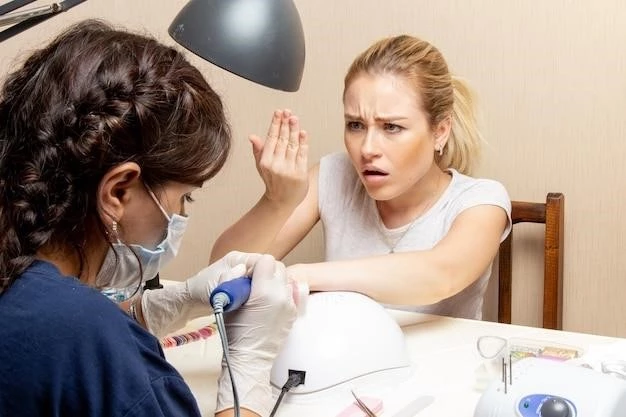Causes of Acrodysplasia
Acrodysplasia can be caused by genetic mutations or environmental factors.
Genetic Mutations
Genetic mutations, particularly in genes responsible for skeletal development, can lead to acrodysplasia. Mutations alter protein functions essential for proper growth and bone formation, resulting in the characteristic features of this condition.
Environmental Factors
Environmental factors such as exposure to certain substances or toxins during pregnancy can contribute to the development of acrodysplasia. These environmental influences may disrupt normal fetal development and skeletal growth, potentially leading to the disorder.

Symptoms of Acrodysplasia
Common symptoms include abnormal limb growth, facial abnormalities, and joint pain.
Abnormal Limb Growth
Abnormal limb growth is a hallmark of acrodysplasia, where affected individuals may experience disproportionate growth in their arms, legs, or fingers. This condition can result in limbs being shorter or longer than typical for age and may lead to functional challenges.
Facial Abnormalities
Facial abnormalities, such as a prominent forehead, underdeveloped midface, or a flattened nasal bridge, are common features of acrodysplasia. These distinctive facial characteristics are often evident from early childhood and can vary in severity among affected individuals.
Joint Pain
Joint pain is a common symptom in acrodysplasia due to abnormal skeletal development impacting joint function. Individuals with this condition may experience discomfort, stiffness, or limited range of motion in their joints, which can affect daily activities and quality of life.
Diagnosis of Acrodysplasia
Diagnosis involves physical examination, imaging studies, and genetic testing.
Physical Examination
During a physical examination for acrodysplasia, healthcare providers assess skeletal growth, measure limb proportions, and evaluate facial features. Additionally, they may investigate joint functionality and any other physical characteristics associated with the condition.
Imaging Studies
Imaging studies such as X-rays, CT scans, or MRI scans are used to visualize skeletal abnormalities, assess bone structure, and evaluate joint integrity in individuals with acrodysplasia. These images help in diagnosing the condition and planning appropriate treatment interventions.
Genetic Testing
Genetic testing plays a crucial role in diagnosing acrodysplasia by identifying specific gene mutations responsible for the condition. Understanding the genetic basis helps confirm the diagnosis, provide insight into disease progression, and guide personalized treatment strategies tailored to the individual’s genetic profile.
Treatment Options for Acrodysplasia
Treatment options include orthopedic interventions, medications, and surgical procedures.
Orthopedic Interventions
Orthopedic interventions for acrodysplasia focus on correcting limb deformities, improving joint function, and managing mobility issues. These interventions may include specialized bracing, limb-lengthening procedures, or joint surgeries to enhance overall musculoskeletal health in affected individuals.
Medications for Symptom Management
Medications for acrodysplasia aim to manage symptoms such as pain, inflammation, and joint stiffness. Pharmaceutical options may include pain relievers, anti-inflammatory drugs, or medications to support bone health. Close monitoring and tailored medication regimens help improve quality of life for individuals with acrodysplasia.
Surgical Procedures
Surgical procedures for acrodysplasia involve correcting skeletal abnormalities, addressing joint issues, or enhancing limb alignment. These procedures may include osteotomies, joint stabilization surgeries, or bone realignment surgeries to optimize function and mobility. Surgical interventions play a vital role in improving the physical well-being of individuals with acrodysplasia.
Prognosis of Acrodysplasia
The prognosis depends on the severity of symptoms and early intervention with appropriate treatments;
Impact on Quality of Life
Acrodysplasia can impact quality of life due to physical limitations, pain, and emotional challenges. Managing symptoms effectively and providing comprehensive support services is essential for improving the overall well-being and quality of life for individuals affected by acrodysplasia.
Long-Term Outlook
The long-term outlook for individuals with acrodysplasia varies based on disease progression, treatment effectiveness, and adherence to management strategies. Close monitoring, early interventions, and ongoing support can positively influence the long-term health outcomes and overall quality of life for individuals living with acrodysplasia.
Research Advancements in Acrodysplasia
Ongoing research focuses on gene therapy and emerging treatments for acrodysplasia.
Gene Therapy
Gene therapy research in acrodysplasia aims to develop innovative treatments targeting specific genetic mutations. By introducing functional genes or modifying defective ones, gene therapy holds promise for correcting underlying genetic abnormalities and potentially improving symptoms associated with acrodysplasia.
Emerging Treatments
Emerging treatments for acrodysplasia involve novel therapeutic approaches aimed at addressing specific symptoms and underlying mechanisms of the condition. These innovative strategies, which may include targeted therapies or regenerative medicine techniques, hold potential for enhancing treatment outcomes and improving the overall health of individuals with acrodysplasia.
Management Strategies for Acrodysplasia
Effective management involves a multidisciplinary care approach and physical therapy.
Multidisciplinary Care Approach
Acrodysplasia management benefits from a team-based approach involving specialists in orthopedics, genetics, and rehabilitation. Coordinated care ensures comprehensive treatment planning to address the complex medical, physical, and emotional needs of individuals with acrodysplasia.
Physical Therapy and Rehabilitation
Physical therapy and rehabilitation programs aim to improve mobility, strength, and functional abilities in individuals with acrodysplasia. Customized exercises, orthotic devices, and adaptive strategies are utilized to optimize physical function, enhance independence, and promote overall well-being for those affected by acrodysplasia.
Support Resources for Individuals with Acrodysplasia
Support resources include patient advocacy groups and counseling services for emotional support.
Patient Advocacy Groups
Patient advocacy groups offer support, resources, and community for individuals and families affected by acrodysplasia. These organizations strive to raise awareness, provide educational materials, and advocate for improved care and services for those living with acrodysplasia.
Counseling and Emotional Support Services
Counseling and emotional support services provide crucial assistance to individuals and families coping with the challenges of acrodysplasia. Professional counselors and support groups offer guidance, coping strategies, and a safe space to address emotional well-being, mental health concerns, and psychosocial aspects related to living with acrodysplasia.
